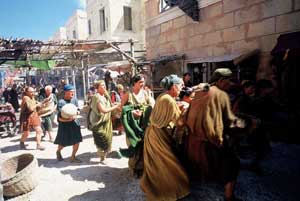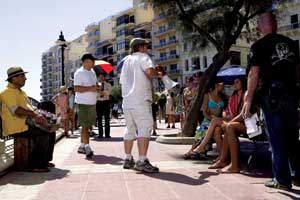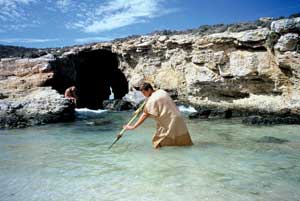A Brief History of Filming
|
|
International producers have been coming to Malta, Gozo and Comino for more than 50 years, and the historical origins of the islands’ popularity as a film and TV location lie in one word: water. In 1963, Jim Hole, a British special effects specialist, and Paul Avellino, a young Maltese construction manager, devised a plan to help directors to film safely on water. At Rinella, on Malta’s eastern coast, they built Malta Film Facilities: a shallow-water tank, 300 feet wide and immune from the vagaries of tides and stormy weather. The tank blends seamlessly with a clear horizon, so directors can give audiences the illusion of action taking place miles out to sea, with no need for special effects. The tank was first used for the Cold War naval drama The Bedford Incident in 1964, and movies, TV dramas, commercials and music videos with water-set scenes have been using Mediterranean Film Studios (the Rinella site’s name since 1978) ever since. But producers who were first drawn to Malta for the tanks swiftly noticed its other assets, notably its superb climate and its proximity to the major European cities where many film companies and film studios are based. Above all, they noted how the cliffs, coastal inlets and varied architecture of the islands offer unspoiled locations that are perfect for historical epics like Gladiator and Troy or period dramas such as Cutthroat Island and The Count of Monte Cristo. In response to the upsurge in interest from international producers, the Malta Film Commission was established in 1999 to encourage and promote greater use of the islands as a film and TV location and to assist visiting productions before, during and after filming. |




